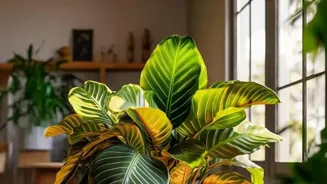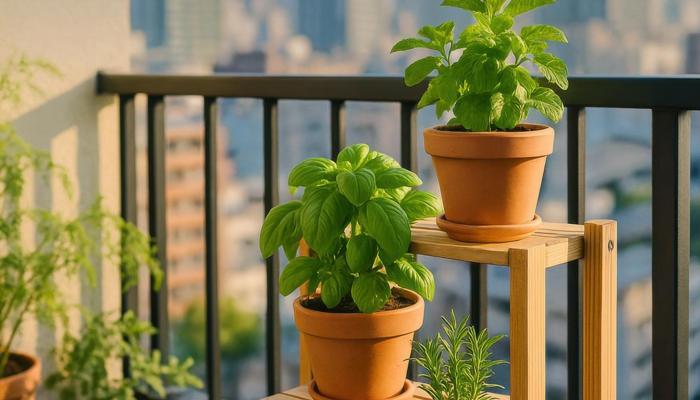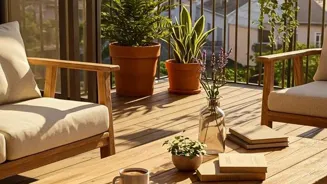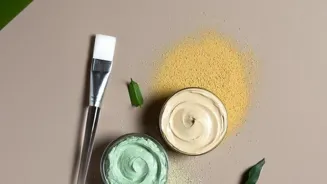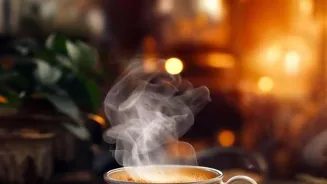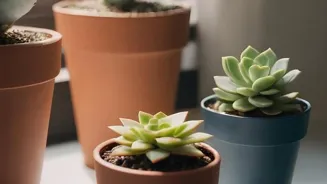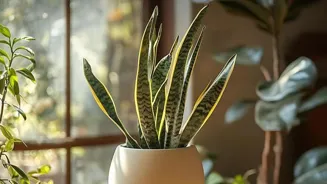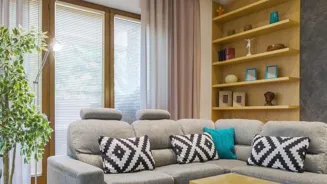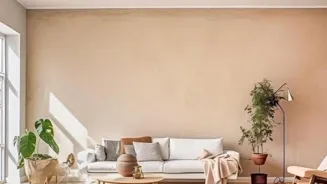Transform Your Apartment Into a Lush Indoor Garden! Easy tips to create a green oasis inside. Read on!
Mumbai: Urban dwellers, rejoice! Craving a touch of nature amidst the concrete jungle? You don't need
a sprawling bungalow to cultivate a thriving green space.
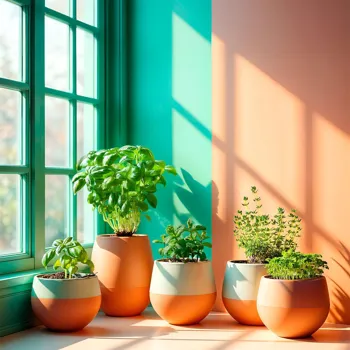
With a little know-how, you can transform your apartment into a lush indoor garden, bringing in fresh air, vibrant colour, and a sense of tranquility.
It isn't as tough as cracking the UPSC exam, trust us! It's about understanding a few key principles and tailoring them to your living space.
So, ditch the drab décor and get ready to embrace the green revolution – right inside your own sweet home! We've compiled ten essential tips to guide you on your journey to becoming an indoor gardening guru.
Shed Some Light on the Situation: Understand Your Apartment's Lighting
Before you rush to the nursery and buy every plant that catches your eye, take a moment to assess the light situation in your apartment. Different plants have drastically different light requirements. Some thrive in bright, direct sunlight, while others prefer the gentle embrace of shade.
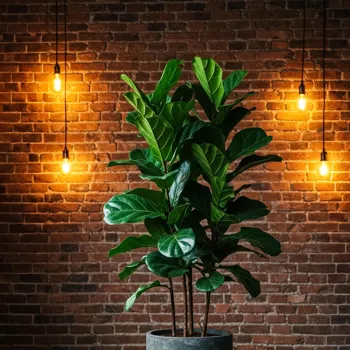
Spend a day observing how sunlight moves through each room. Which windows get the most direct sun? Which areas remain shaded throughout the day? South-facing windows typically offer the most light, while north-facing windows provide the least. East and west-facing windows fall somewhere in between.
Consider using light meters to get an more precise reading. With information on light you create the best atmosphere to grow indoor plants without much hassle.
Once you understand your apartment's lighting, you can choose plants that will flourish in those conditions.
For example, succulents and cacti adore bright, direct sunlight and are perfect for sunny windowsills. Ferns and snake plants, on the other hand, prefer shade and will thrive in dimly lit corners. You might also choose to incorporate grow lights to supplement the existing natural lighting.
This is especially helpful during the winter months when sunlight is limited. LED grow lights are energy-efficient and can provide the spectrum of light that plants need to thrive.
Don't underestimate the significance of this step; providing the right light is the foundation for a thriving indoor garden.
Consider the distance of your plants from the window as well. Even sun-loving plants can get damaged if they are right in the front of the window on a hot afternoon.
Monitor the leaf colours, and if you see yellowing or browning, you may need to adjust the location of the plant. You can test sunlight by using your own hands. Place your hand between sunlight and the plant to see how much sun the leaves can grow.
Using indoor garden, you can easily grow plants the way that you want. Take a good look at the sunlight that comes into your home to grow plans accordingly.
Choose the Right Plants: Be Smart About Your Selection
Now that you know your apartment's light situation, it's time for the fun part: choosing your plants! But don't get carried away just yet. Consider the size of your apartment and the amount of space you have available.
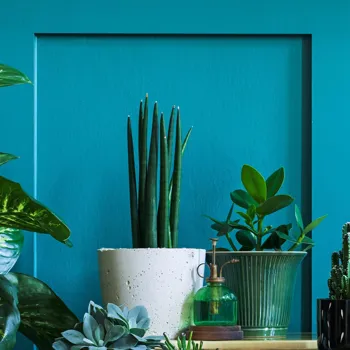
Towering fiddle-leaf figs might look stunning, but they may not be the best choice for a small studio. Similarly, be mindful of the humidity levels in your apartment. Some plants, like orchids and ferns, crave humidity, while others, like succulents and cacti, prefer dry air.
If your apartment tends to be dry, consider investing in a humidifier or grouping your plants together to create a microclimate of higher humidity.
Start with easy-to-care-for plants like snake plants (Sansevieria), ZZ plants (Zamioculcas zamiifolia), spider plants (Chlorophytum comosum), or pothos (Epipremnum aureum). These plants are relatively low-maintenance and can tolerate a wide range of conditions, making them perfect for beginners.
Once you've mastered the basics, you can gradually expand your collection and experiment with more demanding varieties. Consider incorporating herbs like basil, mint, or rosemary into your indoor garden.
You will be able to bring natural elements to your homes and make sure the setting is serene and beautiful. These serve a dual purpose: they add a touch of greenery and provide fresh ingredients for your cooking.
Don't be afraid to ask for advice at your local nursery or garden centre.
The staff can help you choose plants that are well-suited to your apartment's environment and provide tips on how to care for them. Before you buy a plant, do a little research to learn about its specific needs.
Understanding its light, water, and humidity requirements will ensure that it thrives in your home. Also, it is a good idea to research the size of plants that grow indoors. You do not want plants that grow too fast than what you can handle in the limited space.
Potting Perfection: Choosing the Right Containers and Soil
The right pot and soil are just as important as the plant itself. Choose pots that are the appropriate size for your plants. A tiny seedling in a giant pot will be overwhelmed, while a large plant crammed into a small pot will be stunted.
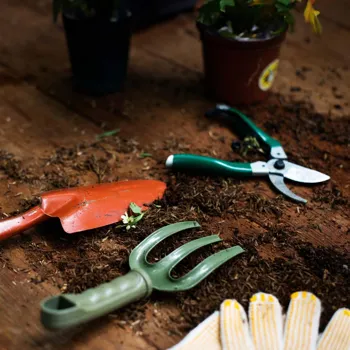
Make sure your pots have drainage holes to allow excess water to escape. Without drainage, the soil can become waterlogged, leading to root rot. Terracotta pots are porous and allow the soil to breathe, while plastic pots retain moisture for longer.
The material you choose will depend on the type of plant you're growing and your watering habits.
Invest in high-quality potting mix. Garden soil is too dense for indoor plants and can compact over time, hindering drainage and root growth. A good potting mix will be light, airy, and well-draining.
You can also amend your potting mix with perlite or vermiculite to improve drainage and aeration. For plants that prefer acidic soil, such as azaleas and camellias, use an acidic potting mix. Use a plastic tray on the bottom so that the extra water does not seep out of the drainage holes.
Be sure to clean regularly so that there are no insects or pests.
Also, you should consider repotting. When the plants get too big for your pots, you will need to repot them.
You can easily tell the plant needs repotting when roots are visibly coming out of the drainage holes, or the plants are dropping because they are too big for the containers. While repotting, make sure that you work gently. Some roots are sensitive, so you should be very careful.
Add nutrients to the soil while repotting. You can also add coffee grounds to help your plants grow. Remember that plants can survive repotting.
Water Wisely: Don't Overdo It (or Underdo It!)
Watering is perhaps the most crucial aspect of indoor plant care, and it's also the one that people often get wrong. Overwatering is a much more common problem than underwatering, and it can lead to root rot and other problems.
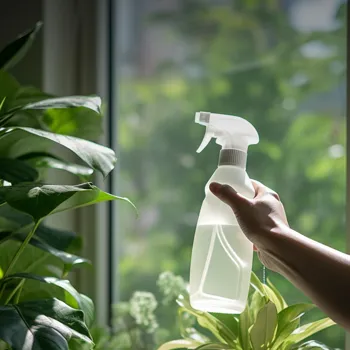
The best way to determine if your plant needs water is to check the soil moisture. Stick your finger about an inch or two into the soil. If the soil feels dry, it's time to water. If it feels moist, hold off for a day or two and check again. Different plants have different watering needs.
Succulents and cacti, for example, need very little water, while ferns and other moisture-loving plants need to be watered more frequently.
When you water, water thoroughly until water drains out of the drainage holes. This will ensure that the roots are properly hydrated.
Don't let your plants sit in standing water, as this can lead to root rot. Empty the saucer beneath the pot after each watering. Water in the morning, so the plants can slowly absorb the moisture. It is recommended to use room temperature bottled water, instead of tap water.
Over time, tap water can cause plants to develop diseases. Also, if the air in your home is dry, you can invest in humidifier to improve the moisture level.
Consider using a watering can with a long, narrow spout to reach the soil without wetting the leaves.
Wet leaves can be susceptible to fungal diseases. When watering, be sure not to pour water directly onto the stem of the plant. Avoid watering on a schedule to give your plants time to dry out between waterings.
By watering wisely, you can find a balance between providing enough moisture to keep your plants healthy and preventing overwatering, which can be detrimental.
Fertilize for Flourishing: Give Your Plants a Nutritional Boost
Plants need nutrients to grow and thrive, just like humans! But the nutrients in potting mix eventually get depleted, so it's important to fertilize your plants regularly. Use a balanced liquid fertilizer diluted to half strength.
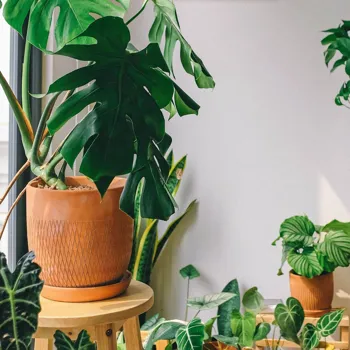
Fertilize during the growing season (spring and summer), typically every two to four weeks. During the dormant season (fall and winter), reduce fertilization to once a month or stop altogether. Over-fertilizing can be just as harmful as under-fertilizing.
Too much fertilizer can burn the roots and damage the plant.
Look for fertilizers specifically formulated for indoor plants. These fertilizers are typically lower in nitrogen, which can promote excessive foliage growth at the expense of flowers or fruit.
You can also use organic fertilizers, such as compost tea or worm castings, to provide a gentle and natural source of nutrients. Apply those fertilizers at the right time of the year. Check each plant and see if the fertilizer is appropriate.
If you decide to use organic fertilizers, there could be an odor that smells weird. In that case, make sure the place is well-ventilated.
Pay attention to your plants' needs and what stage the plants are in. Just like humans, older plants have different needs than younger plants.
So consider their fertilizer needs separately. You can also test soil to see what type of fertilizer is needed. Don't overdo it because too much fertilizer can hurt the plants.
Also, if you transplant plants, then you will not need to fertilize plants for three months because the soil has already been fertilized. So always keep that in mind.
Prune & Groom: Keep Your Plants Looking Their Best
Regular pruning and grooming are essential for maintaining the health and appearance of your indoor plants. Pruning involves removing dead, damaged, or diseased leaves and stems. This encourages new growth and helps to prevent the spread of diseases.
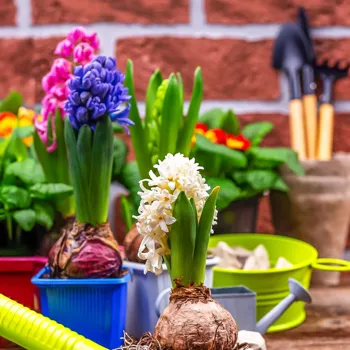
Grooming involves removing dust and debris from the leaves. Dust can block sunlight and prevent plants from photosynthesizing efficiently. Use a soft, damp cloth to gently wipe the leaves clean. You can also use a fine-mist spray bottle to mist the leaves with water.
Pinching back stems can encourage bushier growth. Use your fingers to pinch off the tips of the stems just above a leaf node. This will stimulate the plant to produce new shoots from the leaf node, resulting in a fuller, more compact plant.
Remove any spent flowers to encourage the plant to produce more blooms. Deadheading, or removing finished blooms, prevents the plant from wasting energy on seed production. By regularly pruning and grooming your plants, you can keep them looking their best and promote healthy growth.
Clean tools and scissors to prevent the spread of pests or diseases.
Many people do not realize that pruning and grooming is important, but it is. If you want your plants to survive for a long time, you must remember to prune and groom.
Plants will generally require more work during certain parts of year. Consider hiring a professional if it is too much for you to handle. Pruning tools are fairly cheap. It is recommended to have gloves so that you can protect your hands.
Remember to fertilize the plants after you cut away plants and leaves.
